But reports of rail’s impending death may be exaggerated.
“Is this going to be a game-changer? No, not yet anyway,” says Larry Gross, an intermodal analyst at Gross Transportation Consulting.
Industry analysts say the Tesla Semi does not appear to match the hype surrounding its debut. The truck can go 500 miles on a single charge, and 400 miles after spending just 30 minutes in a Tesla charging station. Production is scheduled to begin in 2019.
Tesla’s announcement left out key details, such as price of the Semi and the weight of its battery.
Musk said the Semi would be expensive. Trucking companies will need to know whether a battery-powered rig’s lower operating costs are offset or even negated by the higher purchase price.
And if the Semi’s battery pack weighs more than a traditional diesel engine and related components, then it will eat into the truck’s carrying capacity.
“These guys are not going to be sold on sizzle,” Gross says of truckers. “Hard numbers are the only thing that counts.”
One of those hard numbers is the battery weight.
Trucks can weigh a total of 80,000 pounds, a figure that includes the rig and its payload. Some analysts estimate that the Tesla battery may weigh 10,000 pounds, or roughly twice the weight of a diesel engine, fuel, and transmission.
If Semi’s battery weighs more than the equivalent diesel truck’s powertrain, its use would likely be severely limited, Gross says, because truckers operate general purpose fleets that are one size fits all.
They are not going to try to manage which rigs can handle full loads and which are payload-constrained by the Semi’s battery weight, he explains.
Tesla faces additional obstacles to wide deployment of its Semi. Chief among them may be the limited availability of charging stations, says Anthony Hatch, an analyst with ABH Consulting.
Where the trucks can roam will depend entirely on the network of charging stations.
“Right now I see it as a help for drayage, possibly,” Hatch says of moves between intermodal terminals and shippers’ docks. “Rails aren’t really focused on the sub-500-mile market.”
The Tesla Semi aside, intermodal is under the looming threat of continued advances in truck technology.
Big rigs are becoming more fuel efficient. Platooning — or running a convoy of trucks closely together to save fuel — may be common in a couple of years. And autonomous vehicles have been tested in the U.S. and abroad.
All of these advances would reduce the cost of trucking and erode the cost advantage intermodal has, except in very long hauls, analysts say.
“The combination of autonomous operations, electric traction power, peloton, or long combination vehicle operation is an intermodal killer,” says John Larkin, an analyst with Stifel. “Getting to that point, however, will likely take decades. Other elements of the supply chain will be automated first.”
Walmart and trucking company J.B. Hunt have said they would reserve a few Tesla Semis to test the technology.
“Reserving Tesla trucks marks an important step in our efforts to implement industry-changing technology,” said John Roberts, president and chief executive officer at J.B. Hunt. “We believe electric trucks will be most beneficial on local and dray routes, and we look forward to utilizing this new, sustainable technology.”
In the absence of details about the trucks, the purchase reservations are more symbolic than anything else, Gross says. Any company that is among Tesla Semi’s first customers will be seen as being technologically advanced and green, he says.
None of the Class I railroads would comment on the potential impact of the Tesla Semi.





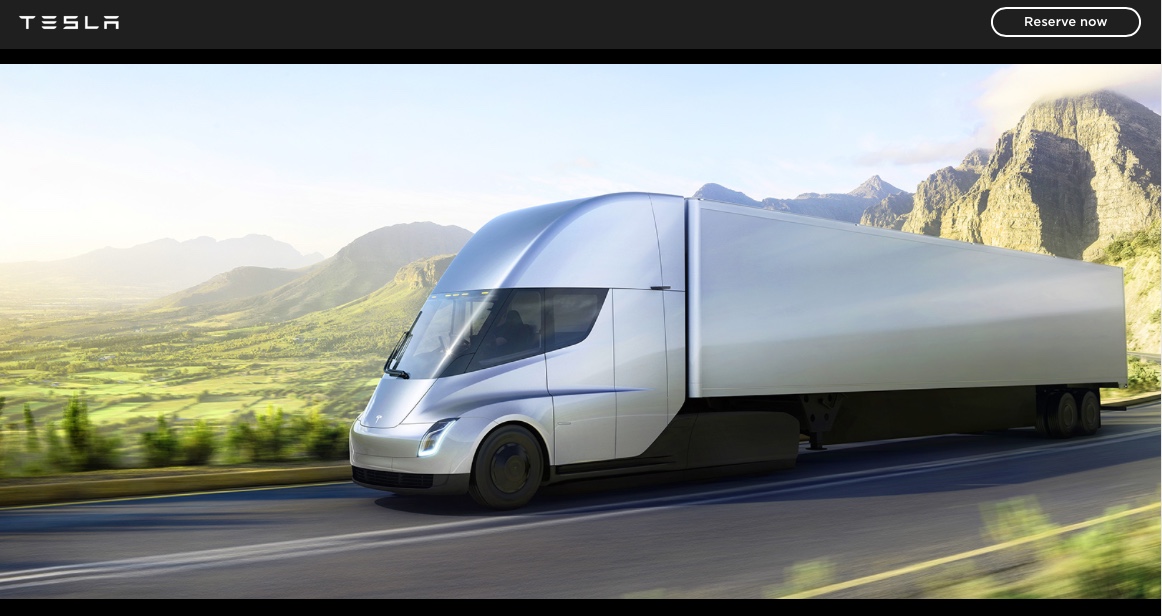

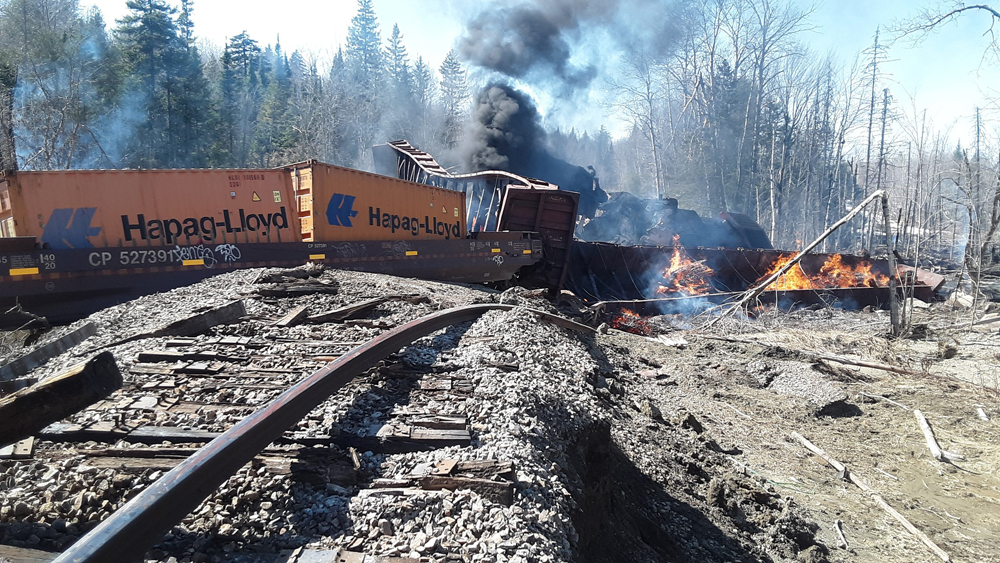
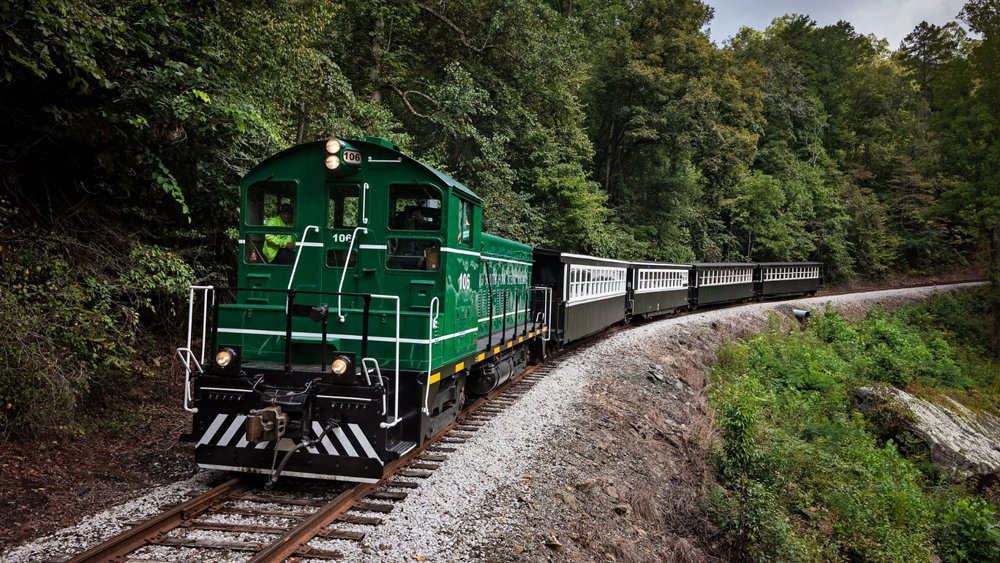
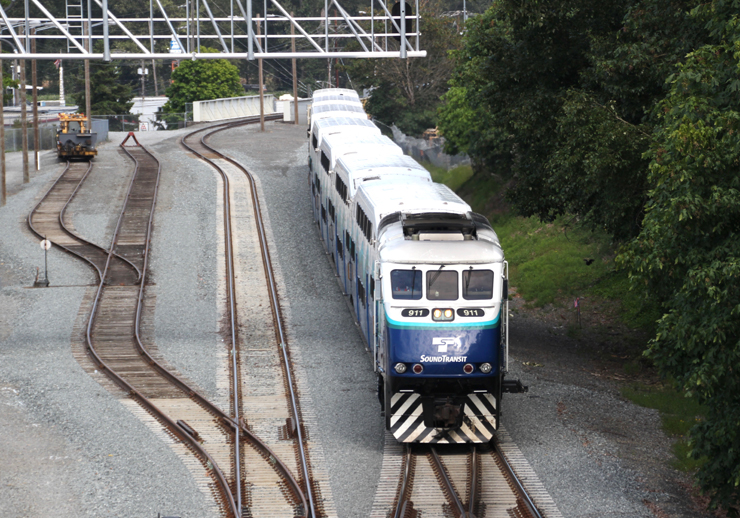
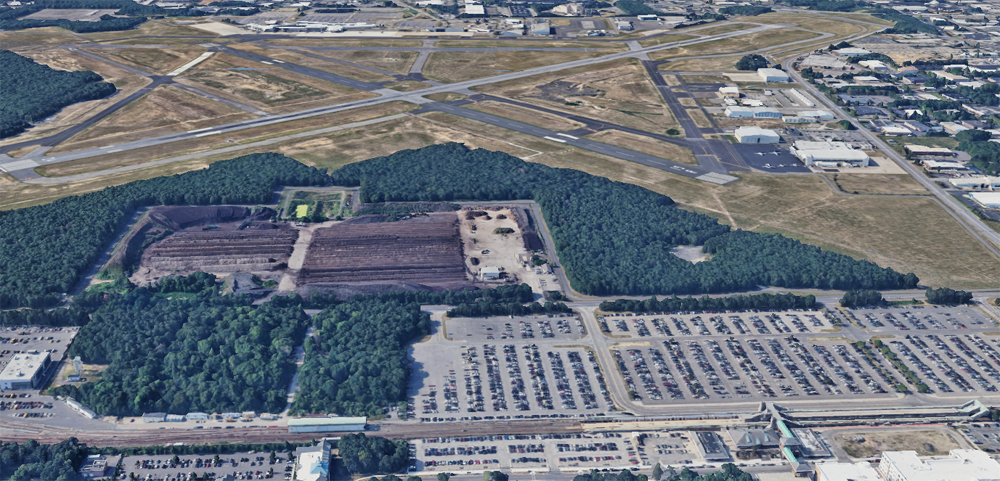




To Donald Armstrong: good point; An autonomous truck on a rush hour rotary? That would be what we all know as the Glitch called an Infinite Loop. And shut down reboot was and still is the only solution. The Geek Squad folks will love that opportunity
What is the daily average number of intermodal containers in motion on our nation’s railroads? Let’s say that tomorrow this intermodal traffic alone is switched over to electric trucks on our already burden roadways. Assuming a mile long, double stack train, how many miles of highway would be required to put those intermodal containers on the road assuming a two vehicle length safety buffer between each vehicle? A long time and a lot of money will need to be invested to repair, upgrade and expand our highways before Tesla, or any other electric vehicle, can attempt to “kill the railroad”.
Reminds me of Musk’s other pie in the sky idea.
I love all the arguments for electric vehicles of every kind. They are touted as environmentally friendly and capable of traveling hundreds of miles between battery charging. The thing that causes me to question them is where does that electricity come from in the first place? Has it stopped being true that converting one form of energy into another involves some loss of efficiency? I can fill my tank in a few minutes and continue on, but it takes half and hour or more to completely recharge an electric vehicle. Has time ceased to equate to money? How long will those batteries hold up and what will it cost to replace them? I drive a hybrid vehicle and get very good mileage, but after my original warrantee expired, I couldn’t find an extended warrantee that covers the replacement of the hybrid system. Do they know something I don’t about longevity and cost? I suspect it will be a long time before truckers accept this new technology for long haul use. In the the meantime, railroads need to continue to improve their technology and the product they offer.
The other thing about the 80,000 lbs limit is it has to be distributed properly. Most trucks have what is called a 13,000 lbs front axle, and are allowed 34,000 to 36,000 lbs on a tandem or paired axles depending on state. Most payloads are 45,000 to 48,000 lbs for a dry van and 45,000 lbs for a refrigerator van. So Tesla is also fighting a weight issue. The other thing is that 5oo miles quote is dry clear flat roads. How much extra juice will it use going up hill or through bad weather or both? Probably burn through a full charge going from Reno to Sacramento, maybe need a recharge on the trip over in winter. Used to drive a food delivery truck with a light load, under 10K and we burned twice as much fuel per mile as running across Nevada to Elko, last stop from the Bay Area.
All Musk has to do is deliver and not lose trainloads of money…which is all his big plans have done to date.
What about all of the road taxes that these trucks won’t pay on diesel fuel to maintain the roads?
I understood that the Wall Street Journal reported that several large trucking companies have stated that they are not interested or have a “we’ll see” attitude.
Actually, driverless trucks may be more of a threat than battery powered trucks. In my most honest, humble, personal opinion, driverless trucks are not only a threat to the rail industry but a threat to public safety as well and should NEVER be allowed on our highways.
The railroads have a history of fighting so-called “truck trains” on our highways – much to their credit. Driverless trucks are an even worse idea.
However, I also believe that Fred Frailey is right on when he says that railroads need to be more aggressive in finding ways to drum up new business. They are too focused on making existing business as profitable as possible but fail to go after new business. I have numerous examples of this that I could cite but that’d perhaps be better left for some other thread.
Regards,
Fred M. Cain
Every time I hear “the autonomous driven truck will take over from rails I then wonder “How well would 3 autonomous trucks do if the all entered a rotary during after noon rush hour. “
@PETER STEVENSON
“Too bad the railroad CEOs are too obsessed with shareholder returns at the moment.”
That is their job. Not everybody can maintain their company’s stock price on the hot air of irrational exuberance like Tesla.
Britt Reid, actually the plane didn’t kill the passenger train. The automobile traveling over taxpayer provided streets and highways did that.
Can someone help me with Musk’s math? I just can’t see how a convoy of 3 driverless trucks pulling grain is going to be cheaper than a 100-car unit train, driverless or not. The only way that’s even conceivable is if you assume unlimited free road capacity. And it isn’t realistic to think you’re going to add 5 million trucks to the road (1.8 million carloads per year * 3 trucks/Car) without having to bear some of the costs.
Any comments from Wal Mart on this development?
When it comes to it…trains could easily run on alternate fuel…driverless…and of course 24-7…so the playing field is slanted again…once trucks get to that step.
The railroads need to shake things up with better ways of doing business. Nothing new from them. The trucking industry is evolving. If the railroads don’t quit just moving low valued freight, the way things are going trucks might be running on old railroad right of ways.
Too bad the railroad CEOs are too obsessed with shareholder returns at the moment.
More vaporware from Tesla.
They can’t even produce the Model 3 (although they are still taking orders for them with 12-18 month delivery times quoted).
Tesla is beginning to look like a giant inflated Ponzi scheme.
Mr Hallock you are not crazy the trucking industry will like the railroads to go out of business where they can charge anything they want and do what they want only if roads are the only way to haul freight.
JW, my response was more directed to Dicenso’s broadbrush comments about electric vehicles so I was considering both cars and trucks. I agree that long haul trucks are on the road at any time of day or night. I think the electric trucks will be interesting for companies that distribute regionally and return the vehicles to a warehouse at night for reloading. That model fits in with overnight recharging during low electricity demand periods.
I know that ‘loose car’ railroading disappeared long ago and I was not addressing that reality. My point was directed to the frequently repeated idea that railroads cannot be competitive with trucks under 800 miles. I think they need to invent new ways of serving shippers. My comment about running passenger schedule unit container trains between points 500 miles apart is more an illustration than anything else.
The modern economy is about getting things done quickly. Back in the day, I believe the 20th Century Limited could run from New York to Chicago in about 18 hours. Is next day delivery really too much to ask for a 500 mile container move in 2017?
Two comments:
Re recharging electric trucks overnight: I am under the impression that many truckers run their rigs into the nighttime, if their loads demand it. So recharging for periods of many hours won’t work.
Re “out of the box” thinking: I believe that both UP, BNSF, NS and CSX run unit trains of perishables all over the country, east-west and north-south. The image of big-railroad as primarily loose-car operators is way out of date. The evolution of long-haul carriers mating with short-line operators for much of the loose-car market will continue. Of course, where medium- and short hauls are profitable the big guys are likely to operate them, as they do now.
Call me crazy if you want, but I think what the trucking industry really wants is to have railroad rights of way converted to roads exclusively for them- at taxpayers expense of course. Wouldn’t they love to have low grade routes to be even more efficient? Especially if they could run truck- trains on them.
Railroads need to change they way they look at the services they can provide. Harrison at CSX at least wants to change the way railroads work and make them more efficient. But that is not enough, new concepts must be tried. Railroads seem to only choose to serve shippers with relatively time insensitive cargo. Anything that needs to be there tomorrow is left to the truckers.
How about some out of the box thinking – freight trains run more like passenger trains. Could railroads grab some of the shorter distance loads if they offered scheduled fast service? For example, what if a railroad guaranteed that if the shipper’s container was delivered to their terminal by 5 PM it would be available in the destination terminal, 400 – 500 miles away, for pickup by 7AM the next day? The service would require dedicated trains of container flats and instant loading facilities. The shipper’s truck would drive up beside the train and a crane would lift the container right onto the flat. At the destination, the reverse would occur. The train length would be fixed and shippers would have to book a ‘berth’ on the train for each container. A 50 car train of double stacks would provide 100 ‘berths’. The train must average a speed of just over 40 mph to travel 500 miles in 12 hours.
A part of making something like this workable is avoiding any trips to a yard to change train lengths or shuffle cars around. The cars will have to be maintained between trips at the load/unload location or complete trains of cars will have to be swapped periodically. Service reliability will be critical – no stops to ‘set out’ a bad car.
Another thing to avoid is concentrating load/unload activity into huge centralized facilities. A bunch of dispersed facilities, each capable of holding a single train, makes service sense as it cuts the time and distance for drayage to and from the customer’s facility. Shorter trains with fewer cars runs contrary to current railroad practice of huge trains with a single crew. Unions may have to compromise and allow operation with a one person crew to make the economics work. A single crew person with an automated train may be the answer.
The concept demands that the railroad despatch and operate the train with top priority like mainline passenger service in the heyday of railways. Modern systems should be up to the same task that despatchers and telegraphers handled in the 1930s.
I am sure people will have a hundred reasons why this wouldn’t work. Maybe they are right but perhaps the objective should be to solve the problems not justify the reasons.
In the end these trucks are still going to have to mix it up in already congested areas of the U.S.A. For short hauls they may be the next answer in clean power for city and suburban areas but for longer hauls I just don’t see it. What owner/operator who just invested in new trucks in the past few years is going to jump on a potentially very expensive rig that has not been proven? I see a roll out out of these but not widespread use for years to come.
I agree with Roger Keay 100% on nuclear electricity generation. Which of sanity prevails won’t be good for rail coal, frac sand and pipe carloadings.
I also agree with him that to grow, rail needs to play in the service sensitive market, which is mostly (but not entirely) Intermodal. And for that to work doubled, tripled and even quadrupled frequencies are needed to account for the non-trivial terminal time spent getting all the pieces – dray, empty boxes, chassis, lifts – to sync properly.
And for that to work at yesteryear’s passenger train schedules (or some reasonable fraction of that given max allowable speed limitations but retaining high schedule reliability) you need shorter trains of all types that don’t break down on the road (or are rapidly fixable in the rare cases they do) and that fit in existing sidings and yard leads without fouling the main for other time sensitive traffic.
And for that to work you need different kinds of labor agreements, possibly one person crews, or possibly trading away the wage premium associated with unreliable scheduling, crew calling, recrew wait time, poor rest, etc for a better lifestyle with human friendly work schedules.
Actually, in June 1956 the 20th Century ran both ways in 15 hours and 45 minutes. The Broadway Limited in July 1956 ran westbound in 15 hours and 45 minutes and eastbound in 15 hours and 30 minutes.